The key to successful termite detection lies in answering one crucial question: “What do termite holes look like?“
This blog offers an in-depth guide on identifying these telltale signs of infestation, empowering you with the knowledge needed to protect your home from termites.
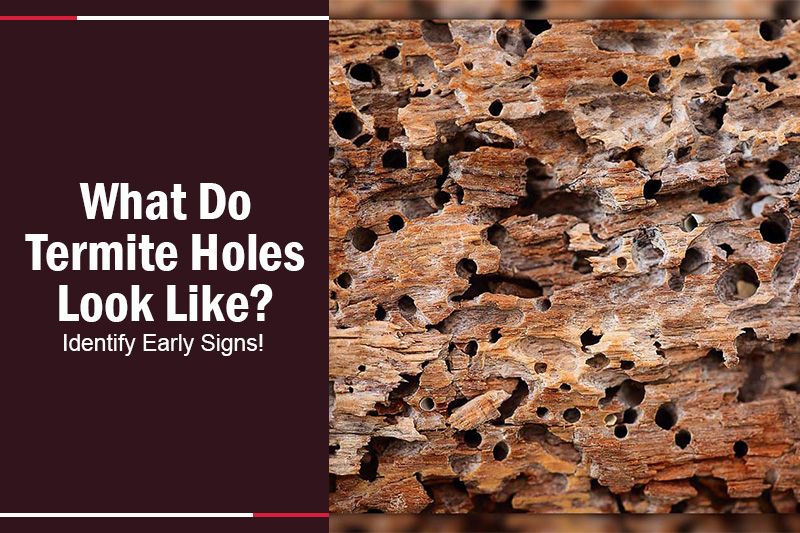
What Do Termite Holes look like?
Termite holes are typically small, round, and no larger than ⅛ inch in diameter. After termites leave these holes, young termites, or nymphs, quickly seal them with a paste made from termite droppings (frass) or chewed wood. This sealing is a distinctive characteristic of termite holes, as it’s rare to find them uncovered. Recognizing termite holes is crucial as they are clear indicators of an active termite infestation.
Although termite holes may resemble damage caused by other insects, they have unique features that set them apart. Termites create what are known as exit holes or kick-out holes. Spotting these holes early is important, as termites can cause significant structural damage to homes if left untreated.
Holes in Wood Caused by Termites
In wood, termite holes can be quite noticeable. They might give the appearance that the wood has been shot with a BB gun, featuring anywhere from a handful to hundreds of holes, each about 1/8th of an inch wide.
These holes are telltale signs of termite activity and should be examined carefully.
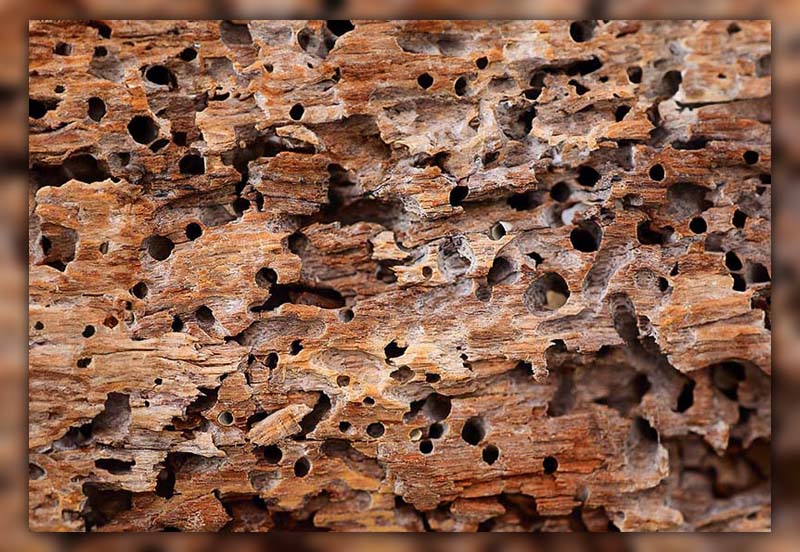
Exit Holes Created by Termites
Termite exit holes, which are similar in size and shape to entry holes, measure around 1/8 of an inch or slightly smaller.
The key difference is that these holes are sealed shut by termite nymphs using a feces-based, cement-like material after the swarmers have departed. This sealing process is a unique behavior of termites.
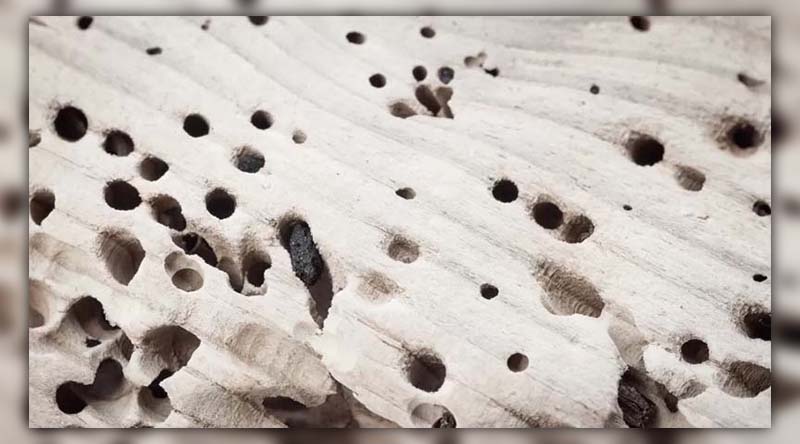
Termites Boring Holes in Dirt and Ground
Termites also make holes in the ground. These ground holes are part of the colony’s structure and can be found in places like soil around homes or in tree stumps. Identifying termite holes in dirt can be more challenging due to the ever-shifting nature of soil.
These holes are typically around 1/8th of an inch in width. Unlike holes made by other insects, there usually aren’t piles of soil around them, and they have a more tubular shape.
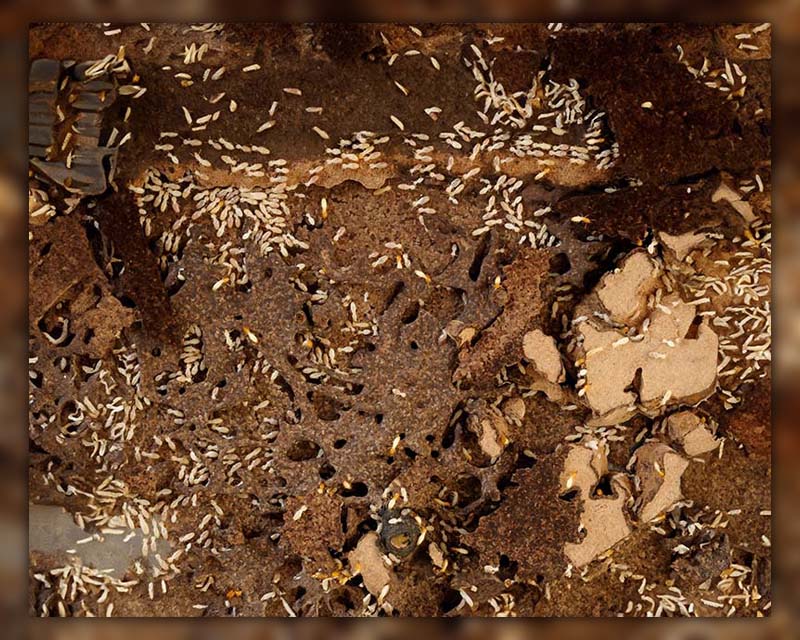
Distinguishing termite holes in the ground from those made by other insects like ants can be tricky. However, the more tubular shape of termite holes is a key identifying feature.
Recognizing these signs in your yard is essential for early detection and control of termite infestations.
When are holes made by Termites?
These holes, called exit holes, are made by termites when they are ready to leave their current home and start a new one. This usually happens in the spring, which is also when termites mate and start new colonies.
It’s a good idea to keep an eye out for these holes. Spotting them early can be a warning sign that you might have termites. By looking out for these holes, especially in the spring, you can catch a termite problem early and take care of it before it gets bigger.
Which type of Termites bore holes?
The drywood termites that are known for making exit holes. Unlike other termites, drywood termites live in wood that’s above ground and don’t need to be in contact with soil.
These termites have a special ability: they can chew through wood and extract water from it to survive. The holes they leave behind, often called kick-out holes, are unique. You can tell it’s a kick-out hole because you’ll find tiny wood pieces near it, similar in size to mustard seeds.
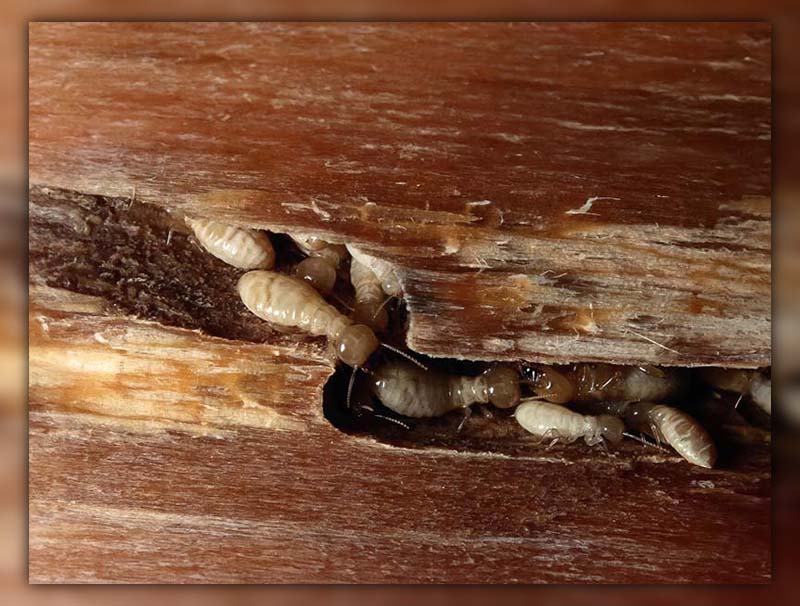
If you see these small holes in wood around your home, it could be a sign of drywood termite activity. Keep an eye out for these clues to protect your home from these wood-loving pests!
Conclusion
In conclusion, understanding “what do termite holes look like” is a key step in identifying and managing termite infestations, particularly those caused by drywood termites.
For more insightful tips and information on handling various pests, don’t forget to explore our other blogs at Pestweek.

Calina Mabel has over 15 years of experience in the field of journalism and communications. Currently, Calina Mabel is the Content Writer for categories such as Cockroach, Ants, Bed Bugs, Mosquito, Rodent, Termite, and Flies on Pestweek.com. She aims to build content for these categories with a focus on providing valuable and accessible information to readers, in order to create the world’s largest knowledge community about Pests.
All content written by Calina Mabel has been reviewed by Emily Carter.

